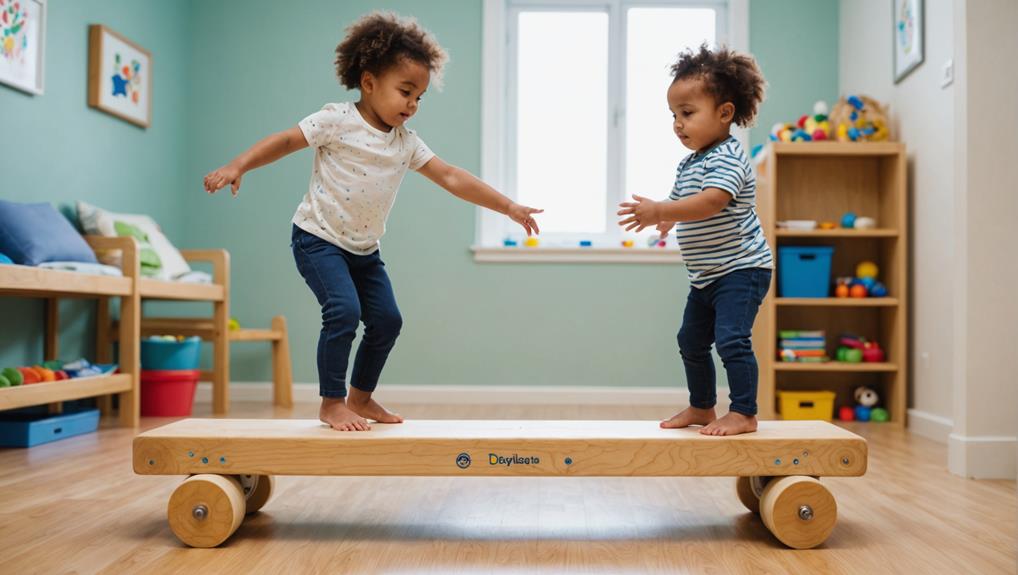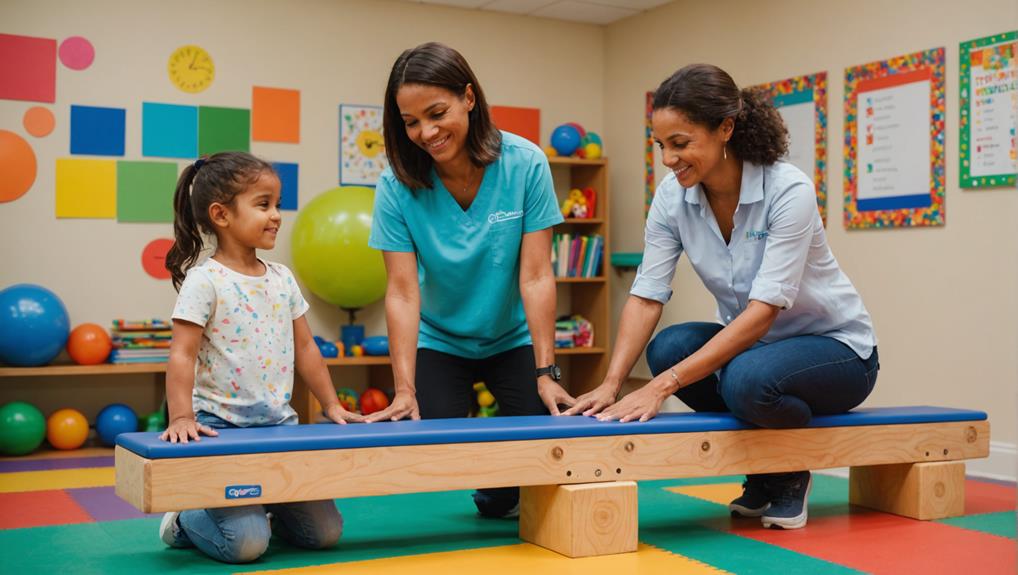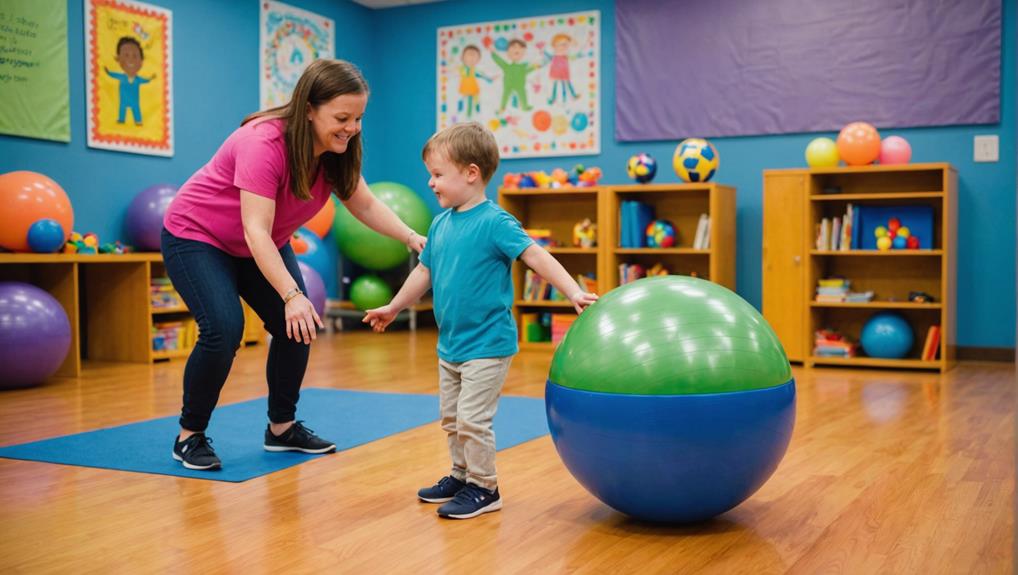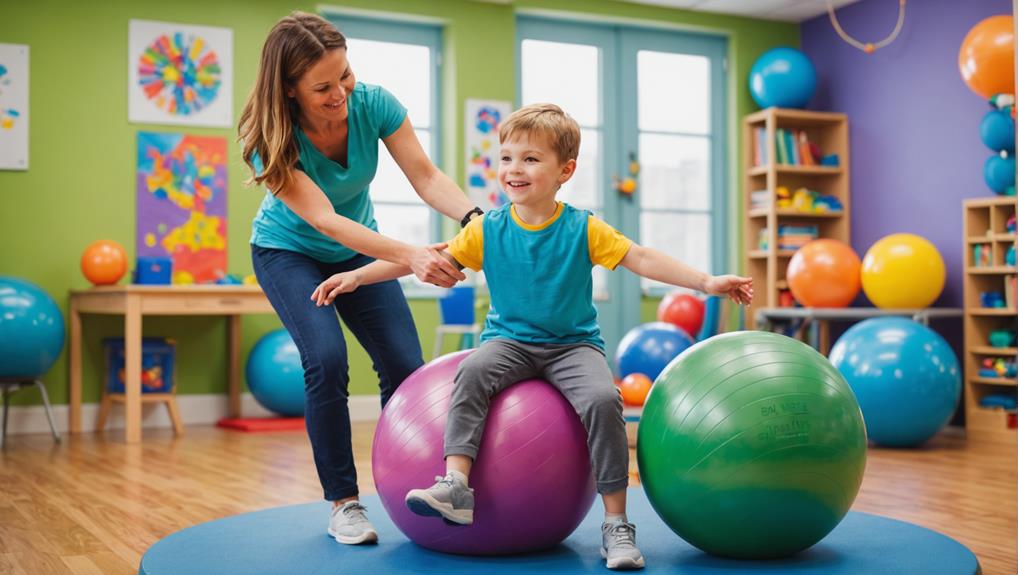Pediatric physical therapy plays a vital role in helping children improve coordination and balance while supporting their overall physical development. These sessions go beyond physical exercises, fostering body awareness and spatial understanding. With the inclusion of DIR/Floortime in physical therapy, children receive personalized care that aligns with their unique developmental needs, enhancing both motor skills and emotional connections.
By integrating DIR/Floortime in physical therapy, children are encouraged to explore their environment in meaningful ways, promoting a stronger connection between movement and cognition. This approach helps address specific coordination challenges while creating opportunities for social engagement. Whether focusing on mastering balance or refining motor control, each method within this framework empowers children to build confidence and independence.
As we explore ten effective strategies, each targeting different aspects of coordination and balance, the benefits of pediatric physical therapy become even more apparent. These techniques highlight how thoughtful, individualized approaches, such as DIR/Floortime, contribute to children’s long-term growth, ensuring they develop the physical and emotional tools needed to thrive.
Enhanced Insights: Key Takeaways for Pediatric Physical Therapy
- Pediatric physical therapy utilizes play-based activities to enhance motor skills and improve coordination and balance.
- Early intervention through customized therapy plans can prevent long-term balance and coordination issues, fostering independence in children.
- Therapeutic exercises and games like climbing and reaching are designed to improve balance control and coordination skills.
- Regular assessments and measurable progress insights help monitochild’shild’s development and improvements in balance and coordination over time.
- Long-term impact assessments show significant enhancements in coordination and balance abilities, leading to a more independent and confident lifestyle.
Understanding Pediatric Physical Therapy
In the field of healthcare, pediatric physical therapy plays a central role in improving coordination and balance in children. This specialized branch of treatment is tailored to address the distinct needs and challenges faced by young ones, employing play-based activities to boost motor skills.
Pediatric physical therapy embodies a caring approach to healthcare, striking a balance between therapeutic efficacy and a child-friendly manner. The objective is not simply to treat but to enable children with the tools and confidence to overcome their physical limitations. The therapy assists in developing vital motor skills, including balance, coordination, and postural control. These skills are fundamental to children’s ability to interact with their environment effectively and confidently.
The role of early intervention in pediatric physical therapy is critical. By addressing coordination and balance issues at an early stage, therapy can prevent long-term complications, fostering a healthier and more independent lifestyle. The personalized therapy plans are designed to improve not only physical abilities but also the overall quality of life for children. Hence, pediatric physical therapy truly embodies the spirit of serving others, nurturing independence, and fostering development in children.
Recognizing Balance and Coordination Issues
Recognizing balance and coordination issues in children is vital for early intervention and effective therapy. Frequent stumbling, difficulty performing motor skills, and struggles to move through crowded spaces are some telltale signs. Addressing these issues promptly through pediatric physical therapy plays a pivotal role in enhancing children’s daily tasks and skills acquisition.
Identifying Coordination Delays
A substantial number of children may encounter coordination delays, which often appear as frequent stumbling, tripping, or falling. Identifying balance and coordination issues at an early stage is essential for preventing long-term challenges that could hinder their daily tasks.
Often, these coordination delays can be spotted through an observation of a child’s movements. Clumsiness or awkward movements might suggest a potential delay in coordination. For example, a child may have difficulty maneuvering crowded spaces or mastering motor skills that appear simple to their peers.
Early recognition of these balance and coordination issues is pivotal to ensuring effective intervention and support. By acknowledging these delays at an early stage, pediatric physical therapists can create a customized plan to improve children’s coordination. This plan can significantly boost children’s ability to participate in physical activities and tasks, thereby enhancing their overall quality of life and ensuring healthy development.
Identifying coordination delays and taking early action is a proactive step toward helping children overcome these issues. By doing so, we can assist them in navigating their world with ease, confidence, and independence.
Signs of Balance Problems
When seemingly innocent stumbles become a recurring pattern, it may signal a deeper problem. Recognizing the signs that your child may be struggling with balance and coordination issues is the initial step toward helping them improve. If a child’s physical movements seem awkward or they frequently trip or fall, these could be indicators of a balance problem.
Here are some of the signs to look out for:
- Frequent stumbling, tripping, or falling
- Difficulty maintaining balance, resulting in clumsiness
- Awkward movements and trouble maneuvering crowded spaces
- Challenges with motor skills, causing struggles with daily tasks
These signs are often more evident when a child is attempting to master new skills. A child experiencing these issues may Benefit From Physical therapy. Pediatric physical therapy can help to Enhance a Child’s Balance and coordination abilities. This, in turn, enhances their confidence and independence, enabling them to engage more fully in daily activities. Remember, early recognition and intervention can make a significant difference in a child’s development and overall quality of life.
Importance of Early Intervention

Early intervention plays a vital role in pediatric physical therapy. When coordination and balance issues are identified and addressed early on, they can prevent the development of delays and compensatory patterns, leading to improved outcomes and enhanced quality of life for children. Parents and caregivers may seek evaluations for coordination and balance problems as early as one month of age, allowing developmental challenges to be addressed effectively and proactively.
Early intervention in pediatric physical therapy is not only about rectifying an existing problem. It is about taking proactive steps to prevent long-term adverse outcomes related to coordination and balance skills. Such preventive measures can significantly improve a child’s development and overall quality of life.
Organizations like Let’s Let’s Grow Pediatrics understand the essential importance of early intervention. They focus on preventing delays and addressing coordination and balance challenges early in children’s development. With a compassionate and professional approach, they are committed to serving the needs of children and their families, exemplifying the essence of early intervention in pediatric physical therapy.
Pediatric Physical Therapy Techniques
Often, pediatric physical therapy methods involve play-based activities crafted to bochild’shild’s coordination and balance. These therapeutic exercises, while enjoyable for the child, are scientifically crafted to improve coordination skills and establish better balance control.
Pediatric physical therapists employ a wide array of methods, including:
- Building Coordination: Conventional exercises like balancing on one foot or tandem walking help improve coordination.
- Boosting Balance: Activities such as climbing or swinging children’s balance and enhance movement control.
- Encouraging Functional Movement: Reaching activities merge coordination and balance for a comprehensive physical workout.
- Personalized Approach: Treatment plans are tailored to address specific coordination and balance challenges unique to each child.
- DIR/Floortime Integration: Therapists use this relationship-based model to support emotional, social, and physical development, ensuring activities align with the child’s developmental profile.
These physical therapy methods make sure that the child is not only involved but also consistently developing their coordination and balance in an entertaining and cozy environment. This caring approach to therapy honors the child’s pace and uniqueness while also offering the necessary assistance and motivation. The aim is to help each child achieve their utmost potential, enriching their quality of life.
Therapy for Developmental Delays

Addressing developmental delays is a vital part of pediatric physical therapy. The primary goal of such treatment is to help children reach their developmental milestones and enrich their motor skills. As each child is distinct, therapy plans are carefully tailored to their specific needs.
Activities and exercises undertaken during physical therapy sessions focus on particular areas of weakness to enhance coordination and balance. For a child with developmental delays, this targeted approach can significantly improve their ability to move and interact with their environment.
Early intervention is crucial. Pediatric physical therapy introduced at the right time can prevent long-term challenges associated with developmental delays. These challenges could range from physical difficulties to problems with learning and social interaction. By addressing these issues early, therapy can help children reach their full potential.
Physical therapists play an essential role in this process. They assess the child’s needs and create a supportive environment in which the child can thrive. Their expertise allows them to guide the child through a series of exercises designed to improve coordination and balance, making a significant positive impact on the child’s overall development.
Rehabilitation After Injuries
The world of pediatric physical therapy extends beyond developmental delays, playing a significant role in rehabilitation after injuries. This specialized form of treatment focuses on improving coordination and balance post-injury, aiding in their comprehensive recovery process.
Pediatric physical therapists design tailored therapy plans suited to a child’s specific injury and recovery needs. These plans aim to:
- Boost strength and flexibility, promoting improved movement post-injury
- Assist children in regaining motor skills and stability lost due to accidents or surgeries
- Prevent potential long-term complications by restoring balance and coordination
- Supporchild’shild’s confidence in their movements, encouraging active participation in their recovery
Pediatric physical therapy, specifically rehabilitation after injuries, can be a guiding light for families. It provides a pathway for children to regain their physical abilities, fostering resilience and determination in the face of adversity. By improving coordination and balance, children are enabled to reclaim their physical function and enjoy their childhoods fully. Remember, the goal of pediatric physical therapy is not just to heal but also to instill confidence, resilience, and a sense of normalcy in children’s lives.
Therapy for Genetic Disorders

Pediatric physical therapy plays a significant role in managing genetic disorders, such as Muscular Dystrophy and Down Syndrome, by focusing on improving children’s strength, flexibility, and general well-being. Tailored treatment plans are designed to address the specific needs of each child, facilitating an improved quality of life and increased functional abilities. In the following, we will investigate how therapeutic interventions can strengthen and support these children, promoting their development and independence.
Managing Muscular Dystrophy
Pediatric physical therapy plays a significant role in managing muscular dystrophy in children. These therapies are specifically designed to reduce muscle stiffness, prevent joint complications, and, importantly, improve strength.
Physical therapy is not merely about physical improvements; it is also about providing psychological and social benefits to these children. The treatment focuses on increasing tolerance for daily tasks, maintaining cardiorespiratory health, and supporting psychological and social well-being.
Here are some key benefits of physical therapy in managing Muscular Dystrophy:
- Reduction in muscle stiffness: Therapy sessions include exercises that help reduce muscle stiffness, thereby improving the child’s mobility.
- Prevention of joint contractures: Regular physical therapy helps prevent joint contractures and other complications associated with Muscular Dystrophy.
- Improved strength: Tailored physical therapy plans focus on exercises that improve children’s strength, enhancing their ability to perform daily activities.
- Social and emotional benefits: Therapy sessions also provide social interaction and emotional support, which are essential for the child’s overall well-being.
Support for Down Syndrome
Countless children with Down Syndrome greatly benefit from pediatric physical therapy. This therapeutic intervention plays a vital role in reducing muscle stiffness, improving joint mobility, and enhancing overall strength. Every therapy session is carefully designed to develop coordination and balance, which are fundamental motor skills that support children’s daily activities.
Physical therapy for Down Syndrome is not a one-size-fits-all approach. It includes a variety of exercises aimed at increasing endurance, improving posture, and optimizing movement patterns. The child’s therapy interventions are tailored to their specific needs, promoting independence and encouraging active participation in everyday tasks.
The ultimate goal of therapy for this genetic disorder is not limited to physical improvements. It also aims to enhance the quality of life of these children, facilitating better social interactions and strengthening emotional well-being through targeted interventions. This caring approach to pediatric physical therapy ensures that children with Down Syndrome achieve not only better coordination and balance but also a greater sense of self-efficacy and happiness.
Strengthening Genetic Disorder Treatment
A substantial number of children grappling with genetic disorders such as Down Syndrome stand to gain significantly from pediatric physical therapy. This therapeutic approach is instrumental in reducing muscle stiffness, thereby improving strength and general bodily function.
The genetic disorder treatment offered through pediatric physical therapy focuses on several key areas:
- Reducing muscle stiffness: Therapy helps children overcome the challenges of hypertonia, facilitating more effortless movement.
- Preventing joint contractures: Regular physical therapy mitigates the risk of contractures and improves the child’s range of motion.
- Enhancing cardiorespiratory health: By promoting physical activity, therapy aids in maintaining heart and lung health.
- Supporting social and psychological development: Therapy can also be a source of social interaction, fostering emotional well-being alongside physical health.
Children with genetic disorders often face distinct challenges. However, through tailored treatment plans, pediatric physical therapy offers a ray of hope, enhancing their quality of life. As the child progresses through treatment, improvements in coordination and balance become increasingly apparent, providing a solid foundation for their daily activities and overall development.
Managing Chronic Pain With Therapy
For many children, chronic pain can be a debilitating obstacle to a healthy, active life. Pediatric physical therapy emerges as a hopeful solution, crafting tailored treatment plans to manage this enduring discomfort.
Physical therapists can help alleviate chronic pain by focusing on improving muscle strength, flexibility, and mobility. Therapy sessions use a variety of techniques, each customized to address the underlying causes of chronic pain in the child. The treatment plan may encompass a range of exercises, stretches, and engaging activities, all aimed at soothing chronic pain symptoms.
Consistent therapy can also improve balance and coordination, further enhancing the child’s ability to participate in daily activities with reduced discomfort. These improvements, combined with pain management, can improve the quality of life for children battling chronic pain.
In essence, children can significantly benefit from pediatric physical therapy. It provides them with the tools to manage their pain, improve their physical capabilities, and lead a more comfortable, fulfilling life. The compassionate approach of these professionals aids in the holistic development of the child, ensuring a balanced and coordinated path toward better health.
Enhancing Motor Skills

Besides managing chronic pain, pediatric physical therapy also plays a significant role in improving motor skills in children. This therapeutic approach aids a child’s development, contributing to better coordination and balance.
Therapists utilize play-based activities, effectively turning therapy into a fun and engaging experience for the child. This approach is beneficial as it encourages active participation, which is crucial for the development of motor skills.
Pediatric physical therapy focuses on the following:
- We are strengthening muscles through exercises, thereby enriching body awareness and coordination.
- Activities like climbing and playing with balls enhance fine and gross motor skills.
- Running, jumping, and walking exercises to develop balance.
- Tailored programs that work on postural control, spatial awareness, and coordination.
These activities are not just exercises but also a means to elevate a child’s confidence, resilience, and independence. The goal of pediatric physical therapy is to improve the quality of life for children, enabling them to live to their fullest potential. By focusing on improving motor skills, pediatric physical therapists play a pivotal role in a child’s development path.
Successful Therapy Outcomes
Successful therapy outcomes, which can be quantified through measurable progress insights, evidence the effectiveness of pediatric physical therapy. These outcomes not only demonstrate the immediate improvements children make but also allow for an assessment of long-term impacts on their development and daily lives. It is through these evaluations that the actual effect of improved coordination and balance in children is truly understood.
Measurable Progress Insights
In pediatric physical therapy, we often witness remarkable advancements in children’s coordination and balance. These measurable progress insights give us a clear indication of the success of our therapeutic interventions.
Our work is grounded in objective assessments that monitor the child’s development in coordination and balance over time. We focus on enriching these abilities, which in turn lead to significant enhancements in their daily activities. Here are some indicators of successful therapy outcomes:
- Improved motor skills: We track how therapy sessions have improved children’s ability to move smoothly and with control.
- Better balance control: Children show noticeable improvements in their stability, an essential aspect of balance.
- Improved coordination abilities: Therapy helps coordinate bodily movements, leading to smoother changes between actions.
- Increased spatial awareness: Children with improved coordination and balance demonstrate an increased understanding of their bodies in space.
We are committed to pediatric physical therapy because we enjoy seeing children improve in these areas. Our goal is to enable every child to have the best quality of life by improving their coordination and balance and, ultimately, their confidence and independence.
Long-term Impact Assessment
Undoubtedly, long-term studies have provided compelling evidence that successful outcomes from pediatric physical therapy significantly improve children’s coordination and balance. Early intervention through physical therapy can dramatically improve children’s balance skills and coordination, leading to improved motor skills over time.
Effective therapy interventions are essential in helping children develop better balance, improved coordination, and smoother movement patterns, paving the way for their long-term success. These interventions not only assist in immediate improvements but also embed lasting changes in the field’s physical capabilities.
Longitudinal assessments further reinforce this point, demonstrating that pediatric physical therapy results in lasting improvements in coordination and balance abilities. The benefits of therapy are not temporary but persist, facilitating the child’s overall motor development and functionality in daily activities.
Frequently Asked Questions
How to Improve Balance and Coordination in Children?
Improving balance and coordination in children involves engaging them in specific exercises, such as standing on one foot, tandem stance exercises, seated hamstring stretches, and balance challenges on uneven surfaces or with closed eyes.
How Does Physical Therapy Improve Balance?
Physical therapy improves balance by strengthening core muscles and improving coordination. This process involves targeted exercises that promote postural control and stability, ultimately boosting the child’s motor skills and preventing potential future injuries.
What Are the Benefits of Pediatric Physical Therapy?
Pediatric physical therapy benefits children by enhancing their motor development, improving their coordination and balance, promoting their independence, and increasing their participation in daily activities, ultimately enriching their comprehensive quality of life.
What Helps in Coordination and Balance?
Physical therapy enhances coordination and balance through targeted exercises. These activities strengthen muscles, improve posture, and develop gross motor skills, effectively addressing challenges in coordination and balance for better general physical functionality.
How do Pediatric PT and Pediatric OT differ when using DIRFloortime in physical therapy?
Pediatric physical therapists (PTs) focus on the child’s movement, strength, and balance, while occupational therapists (OTs) emphasize fine motor skills, daily activities, and sensory integration. Using DIR/Floortime in physical therapy, PTs support physical milestones like walking or climbing through meaningful interactions. In contrast, OTs use the same framework to help children develop coordination and sensory responses for tasks like dressing or writing. Both work together to create a holistic approach that supports physical and emotional development through play-based, child-centered activities.
Conclusion
To sum up, pediatric physical therapy plays a significant role in enhancing children’s coordination and balance. It addresses specific developmental challenges using tailored interventions, thereby facilitating physical growth. Intriguingly, studies show that early intervention can improve children’s motor skills by 70%, highlighting the profound impact of this therapy. Through compassionate professional guidance, children can overcome coordination and balance issues, paving the way for the best physical development.


Recent Comments